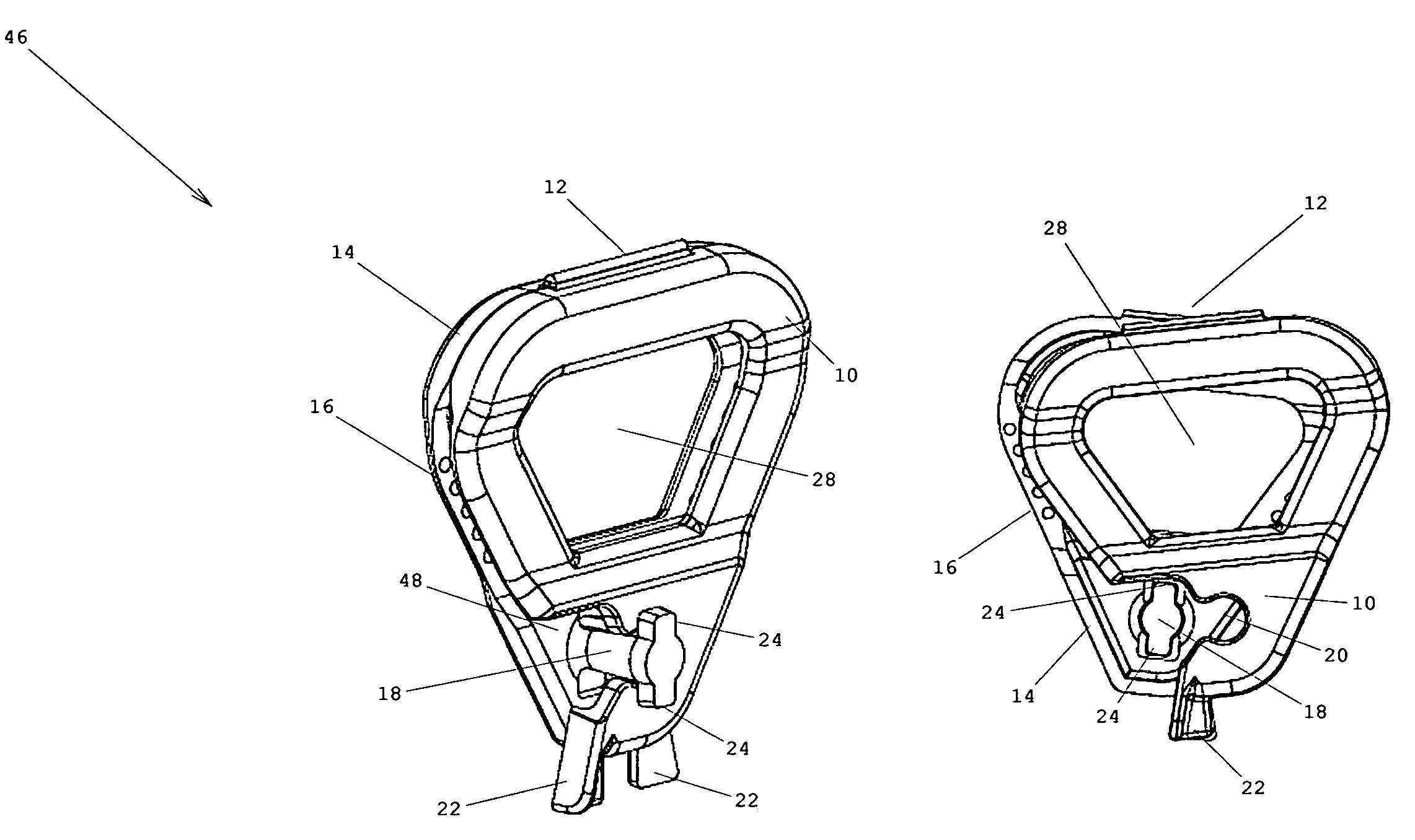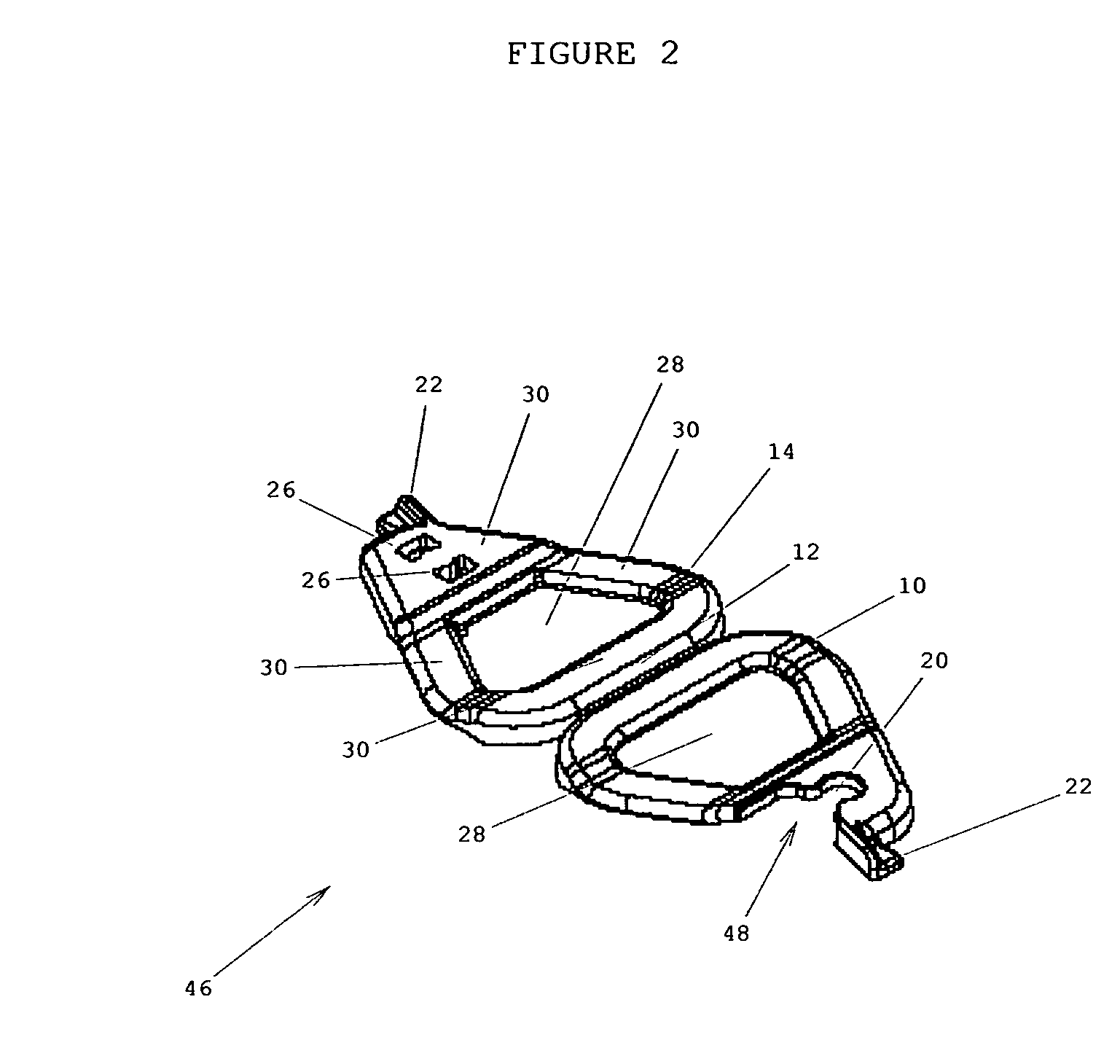Device to secure shoe laces
a technology for shoe laces and devices, applied in the field of shoe laces, can solve the problems of shoe laces shoe laces are still susceptible to coming untied, and untied laces can have extreme consequences
- Summary
- Abstract
- Description
- Claims
- Application Information
AI Technical Summary
Problems solved by technology
Method used
Image
Examples
Embodiment Construction
[0037]The clamping device for keeping conventionally tied shoe 32 laces from coming untied consists of a top frame 14 and a bottom frame 10 that is slid under and over the lace knot 34 and latched together. The lace knot 34 is now secure. The lace knot 34 remains tied until the wearer is ready to remove their shoes at which time they simply unlatch and separate the two frames from around the knot. This device does not stay with the shoe 32 but can be transferred to other shoes.
[0038]FIG. 1 is a bottom perspective view showing the device in the latched position. The device will hereafter be referenced as the grip 46. The grip 46 comprises a top frame 14 and a bottom frame 10 connected by a hinge 12. The grip 46 is opened by squeezing the unlatching tabs 22 horizontally toward each other allowing the two frames 10 and 14 to be pulled vertically apart. The bottom frame 10 is pushed under a conventionally tied lace knot 34 and the top frame 14 goes over the lace knot 34 with the grippin...
PUM
 Login to View More
Login to View More Abstract
Description
Claims
Application Information
 Login to View More
Login to View More - R&D
- Intellectual Property
- Life Sciences
- Materials
- Tech Scout
- Unparalleled Data Quality
- Higher Quality Content
- 60% Fewer Hallucinations
Browse by: Latest US Patents, China's latest patents, Technical Efficacy Thesaurus, Application Domain, Technology Topic, Popular Technical Reports.
© 2025 PatSnap. All rights reserved.Legal|Privacy policy|Modern Slavery Act Transparency Statement|Sitemap|About US| Contact US: help@patsnap.com



